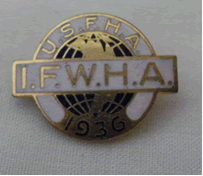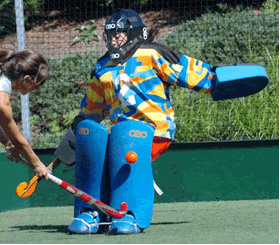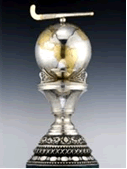Bring In The Ladies:

Women were kept from playing the earlier rough version of Field Hockey. In the 1880s, women’s hockey was restricted to schools and universities in Britain. In 1887, the first Ladies Hockey Club was founded in Molesey, England. The Irish Ladies Hockey Union, set up in 1894, was the first national association. Although the Hockey Association that was progressing for the men’s version of the game looked down upon these feminine attempts, it did not stop the 1927 formation of the International Federation of Women’s Hockey Associations (IFWHA).
Some non-competitive tournaments were held by the IFWHA itself and the popularity of the game spread across Europe. It eventually gained popularity in America through Constance Applebee, a physical education instructor from England. Ms. Applebee had visited Harvard University of Massachusetts in 1901 to attend a seminar. By the 1920s, a good number of colleges and clubs were playing women’s Field Hockey in America. In fact, women’s hockey was played in the USA before men’s hockey made its appearance!
Around 22 countries in continental Europe had women playing as sections of their men’s associations under the IHF, while the IFWHA had 36 member associations. IHF held women’s hockey competitions for the first time in 1974 and the first Women’s World Championship in 1975 in Edinburgh, Scotland. These two groups started work on joining as one officiating body. This effort brought results with women’s hockey entering the 1980 Olympic Games in Moscow and the merger of the two organizations in 1982 calling themselves the International Hockey Federation..

Synthetic grass turf was the rage at the start of the 1970s. The 1976 Olympic Games at Montreal introduced this surface for Field Hockey. It was an instant hit and became the international standard because its flatness allowed higher speeds, though local levels of the game still use grass fields where the turf is not feasible due to its high cost. There are theories that indicate that skill is lost on the turf, though new tactics have come about with this major change to the way the game is played professionally. For example, the Indian Dribble involves the ball being quickly pushed from side to side, turning the hockey stick each time; the Indian and Pakistani teams introduced this technique in the 1956 Olympics.
The stick later got a bent head and became wider and shorter since the ball did not need as much force as on the grass fields used earlier. The backhand stroke became the norm for evasive moves. The new shape of the stick’s head allowed the player to trap the ball, especially at penalty corners. Manufacturers began experimenting with stronger and more durable materials such as kevlar, carbon fiber and fiberglass for the traditionally wooden core. Aluminum formed a good alternative core material, but was not safe when broken. In today’s times, wooden sticks are almost obsolete.
- The Hockey World Cup and
- Hockey Champions Trophy
In 1969, Pakistan’s Nur Khan proposed the concept of a Hockey World Cup to the International Hockey Federation. Competition started in 1971 and is held every four years in-between the Summer Olympics. The Hockey World Cup is hosted in different countries who participate in the event. Countries who have dominated this event include: Pakistan, Netherlands Germany and Australia.
 Founded by the same individual as the World Cup, The Hockey Champions Trophy is now held every year. Since 1978, the Hockey Champions Trophy has had a rotated host. Sponsored as well by the International Hockey Federation this event features six teams who qualify for the tournament. Those six teams include the host nation, defending champion, the world champion and the next highest ranked teams from either the Olympics or World Cup (whichever was most recent). The same nations that have dominated the Hockey World Cup are those who have dominated the Hockey Champions Trophy play.
Founded by the same individual as the World Cup, The Hockey Champions Trophy is now held every year. Since 1978, the Hockey Champions Trophy has had a rotated host. Sponsored as well by the International Hockey Federation this event features six teams who qualify for the tournament. Those six teams include the host nation, defending champion, the world champion and the next highest ranked teams from either the Olympics or World Cup (whichever was most recent). The same nations that have dominated the Hockey World Cup are those who have dominated the Hockey Champions Trophy play.